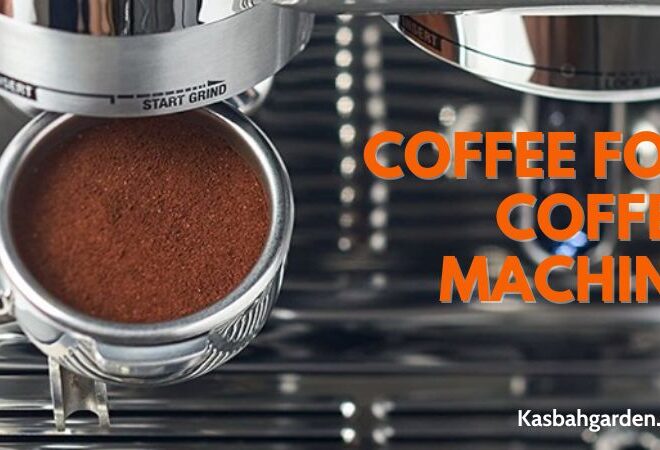Cut Calories Easily – The Guide to Half-and-Half Cream
Half-and-half cream, a staple in coffee cups and recipes across America, strikes a harmonious balance between milk and cream, offering a versatile dairy option that enriches our culinary experiences. This delicate blend, standing between the richness of heavy cream and the lightness of milk, serves not just as a coffee enhancer but also as a secret ingredient in countless recipes, adding a touch of creaminess without the heaviness. However, amid the growing consciousness about nutritional intake and dietary habits, the calorie content of half-and-half cream has become a topic of significant interest for health-conscious individuals and culinary enthusiasts alike.
In this comprehensive article titled “Half-and-Half Cream Calories,” we embark on a journey to explore the nuanced world of half-and-half, dissecting its caloric composition, understanding its place within a balanced diet, and uncovering the myriad ways it can be incorporated into daily consumption. Our exploration is not just limited to counting calories; we delve deeper into the health implications, dietary considerations, and even the environmental impact of choosing half-and-half over other creamers. Armed with insights from nutrition experts and backed by scientific research, we aim to equip you with the knowledge to make informed decisions about integrating half-and-half into your diet, without compromising on flavor or health.
Whether you’re a culinary aficionado curious about the secrets behind your favorite dishes, a coffee enthusiast aiming to perfect your morning brew, or someone navigating the complexities of dietary restrictions, this article promises to shed light on the caloric aspects of half-and-half cream. From understanding its nutritional profile to exploring creative culinary uses, we invite you on a journey to rediscover half-and-half in a way that balances pleasure and health. Let’s unravel the mysteries behind the calories in half-and-half cream, and perhaps, in the process, find new reasons to cherish this beloved dairy delight.
What is Half-and-Half?
Half-and-half is a creamy dairy product made from equal parts whole milk and light cream. This combination creates a liquid with 10-12% milkfat, landing between pure milk and heavy cream on the spectrum.
Half-and-half has a pale ivory color and medium-thick texture. It provides a velvety richness without being overly heavy or greasy. The flavor profile is mild and sweet, with slight nutty notes.
Compared to other dairy additions:
- Heavy cream has 36-40% milkfat, nearly 4x more than half-and-half. It has a much thicker, heavier consistency.
- Coffee creamers are non-dairy, with 0% milkfat. They have a thinner texture designed specifically to mix into hot coffee.
Half-and-half strikes the ideal balance – just enough richness to elevate recipes without overpowering them. It brings a touch of indulgence across both sweet and savory applications.
Primary Uses
The two most common uses for half-and-half are:
- Adding to coffee and tea – It provides velvety texture and subtle sweetness without muting the beverage flavor. Much better than watery non-dairy creamers.
- Making cream-based sauces and soups – Its medium consistency allows half-and-half to blend directly into simmering liquids for perfectly luscious results.
Other tasty ways to use half-and-half:
- Whisk into pancake, waffle, or crepe batters
- Swirl into hot cereals and oatmeal
- Stir into mashed potatoes for extra creaminess
- Combine with spices and dip fresh fruit
- Deglaze pans and enrich pan sauces
- Make frostings and fillings for cakes and pastries
So while coffee and cooking are its fortes, half-and-half offers versatility across sweet and savory recipes when you want a touch of indulgence!
Nutritional Profile Of Half and Half Cream

Now let’s break down the nutritionals in half-and-half:
Calorie Content
Half and half cream contains varying calorie amounts depending on the source. Here are the calorie counts for 1 tablespoon of half and half cream from different sources:
– FatSecret: 20 calories
– Sealtest: 15 calories
– ReciPal: 133.33 calories per 100 grams
– Nutrifox: 37 calories in a 1 fl oz serving
– CalorieKing: 19 calories
To compare:
- Heavy cream has 50 calories per tablespoon (320 per cup)
- 2% milk has 10 calories per tablespoon (100 per cup)
- Non-dairy creamers range 5-25 calories per tablespoon
So the calorie content of half-and-half lands right between heavy cream and milk, offering a nice balance.
Macronutrients
Fat makes up most calories since half-and-half is 50% cream. As a result, each serving contains:
- Total fat: 1.7g
- Saturated fat: 1.1g
- Trans fat: 0g
- Polyunsaturated fat: 0.1g
- Monounsaturated fat: 0.3g
The small amounts of carbs and protein come from the milk component:
- Carbs: 1.5g
- Protein: 0.4g
Micronutrients like calcium, potassium, and Vitamin A are present in tiny amounts – not a significant source.
Health Implications
The high saturated fat content means half-and-half may negatively impact heart health and weight if consumed in excess.
Potential risks include:
- Raised LDL cholesterol
- Increased plaque buildup
- Reduced insulin sensitivity
- Weight gain over time
Moderation is key – limiting daily intake to 2-3 tablespoons is a reasonable goal for most healthy adults. Those with heart disease, diabetes, or obesity should take extra care when adding half-and-half to their diet.
Dietary Considerations
Let’s explore how to work with half-and-half for diverse dietary needs and restrictions:
Keto and Low-Carb Diets
The minimal carb content in half-and-half makes it a great choice for keto and low-carb eating patterns. Just account for the calories from fat.
Dairy-Free Diets
Those avoiding dairy have several plant-based alternatives:
- Almond milk
- Coconut milk
- Cashew milk
- Oat milk
Mixing unsweetened varieties with a touch of vegetable oil mimics the texture of half-and-half.
Lactose Intolerance
Since half-and-half contains less lactose than regular milk, some can handle small amounts. Opt for lactose-free milk and cream to make your own lactose-free half-and-half.
Environmental Impact
Dairy production has a significant environmental footprint we must consider:
[wpdatatable id=19]
As the table shows, plant-based milks have a lower impact across key sustainability markers. Choosing unsweetened varieties as creamer alternatives reduces environmental toll.
Nutritional Benefits
Beyond fat and calories, let’s see what else is present in half-and-half:
Vitamins and Minerals
Half-and-half contains:
- Calcium – aids bone health
- Potassium – regulates heart function
- Selenium – acts as antioxidant
But amounts are quite minimal. To get significant vitamin and mineral intake, consume other dairy products or plant-based sources.
Additives
Some brands add thickeners and stabilizers to improve texture and extend shelf life:
- Carrageenan
- Cellulose gel
- Carboxymethyl cellulose
These are considered safe by FDA but some individuals may wish to avoid. Check labels and choose additive-free when possible.
Comparison to Other Products
How does half-and-half stack up to heavy cream, milk, and non-dairy alternatives?
Heavy Cream – Higher fat, thicker texture, stronger flavor. Best for desserts and sauces needing rich indulgence.
Milk – Lower fat, thinner texture, milder flavor. Preferred for drinking or gentle recipe enhancement.
Non-Dairy Creamers – Lactose-free and vegan but lack richness. Useful for coffee but not for cooking.
Half-and-Half strikes that ideal balance between heavy and light, adding touch of luxury without going overboard. Its versatility makes it the perfect medium cream option.
Cost Considerations
Let’s compare price points of half-and-half to other creamers:
[wpdatatable id=20]
Half-and-half sits in the middle in terms of affordability – pricier than milk but cheaper than heavy cream. Non-dairy is cheapest but lacks richness.
Consider making your own half-and-half from milk and cream for freshest results at the lowest cost.
Culinary Uses
Half-and-half lends elegance without overpowering – perfect for kicking up recipes subtly. Try it in:
Baked Goods
- Pancakes, waffles, crepes
- Muffins, biscuits
- Pies, tarts
Soups and Sauces
- Cream soups, chowders
- Alfredo, béchamel
- Pan sauces, gravies
Hot Cereals
- Oatmeal, granola
- Grits, cream of wheat
Savory Dishes
- Mashed potatoes
- Mac and cheese
- Risottos, polenta
Coffee Drinks
- Lattes, cappuccinos
- Fancy hot chocolate
- Chai tea
Let your imagination run wild! Half-and-half contributes rich character without overpowering natural flavors.
Storage and Shelf Life
To extend the freshness of half-and-half:
- Refrigerate after opening – keeps for 5-7 days
- Freeze extras in airtight containers for 2-3 months
- Watch for signs of spoilage:
- Sour smell
- Lumpy texture
- Mold development
Avoid extreme temperature fluctuations and direct sunlight. With proper care, half-and-half keeps well for worry-free enjoyment!
Conclusion
Half-and-half occupies a uniquely versatile middle ground between heavy cream and milk. With a blend of richness and subtlety, it elevates both sweet and savory recipes beautifully. Mind the fat and calories, then let half-and-half bring a touch of indulgence and delight to your next culinary creation!


